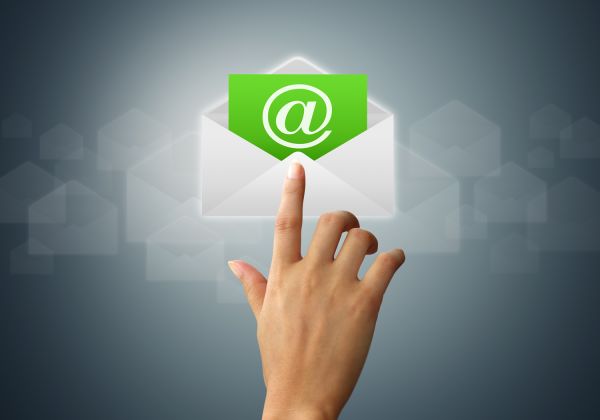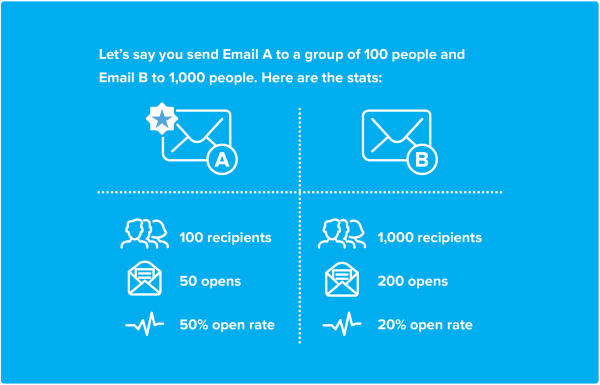Admittedly, on the list of exciting things about running your business, "list hygiene" is probably not up there. But it should be! Practicing good list hygiene can have an enormous positive impact on your email list-and by extension, you're bottom line.

Quality over quantity
First, we need to get in the mindset of valuing the quality of an email list-and not the quantity of emails. You've spent a lot of time and energy growing your list, and you've done a great job.
But in order for that list to be effective, it has to be made up of recipients who want your quality emails and who engage with them.
Remember, sending emails to those who don't want them is about as effective as trying to sell Kanye West on the idea of a vow of poverty.
Here are some ways to keep a clean list to increase the deliverability of your emails as you grow your list.
Remove emails from your list
It's tough to remove email addresses off the list you fought to grow, but cleaning up your list will increase your deliverability because you'll end up with fewer unsubscribes or unopens, which translates to higher engagement and better inbox placement and deliverability.
Here are the types of recipients you should remove from your list:
- Unsubscribers
- Those who mark as spam
- Hard bounces (invalid email addresses that return your email)
- Stale subscribers (recipients you haven't emailed or who haven't engaged with or opened your emails in four months or more)
Keap will automatically removes these addresses from your marketable list when these actions happen in our ecosystem.
A note on stale subscribers
Stale subscribers are perhaps the most difficult to conceive of removing from your list. After all, they opted-in at one point, and they didn't unsubscribe, right?
It's important to understand that an opt-in is not an eternal agreement. You have to get ongoing permission to send emails.
This comes in the form of useful, frequent communications. Stale subscribers can be high risk because they're the most likely to forget why you interacted in the first place and thus are the most likely to mark your emails as spam. Making a practice of sending emails to stale subscribers can really cause your sender reputation and deliverability to take a hit.
You don't have to give up your stale subscribers right away- instead, put them on their own list and send them another email asking them to opt-in again. In the worst-case scenario they won't reply or will unsubscribe. This is actually a good thing as it helps you make sure you keep a list of subscribers who want to engage with you and your emails. Remember, a big but stale list does you no good. It's all about engagement; play the percentages.
In the best-case scenario they re-opt-in to your list and become engaged subscribers, which means you've just added to your subscriber list in a valuable way.

What to do if you switch ESPs
When people switch ESPs, they tend to expect that more people will get their emails, especially since they hear a lot about an ESP's great deliverability rates and good sending reputation. People expect that opt-in rates will go up while spam complaints and opt-outs will go down.
Having read all that goes into sender reputation and list hygiene, at this point you shouldn't be surprised to learn that this is not the case. In fact, the opposite often happens. But don't panic! There's a good reason, and it's very avoidable.
Remember, your domain's sender reputation remains with you. But when you go through a new ESP, unengaged recipients might suddenly see an email from you in their inbox when your emails had previously been going to spam. After months of thinking they haven't heard from you, they'll see this email from a new ESP and think, "Why am I back on this list?" Then they get frustrated and either opt-out or report you as spam.
If you have a squeaky clean list, you probably won't have this problem. But if your list needs a bit of cleaning, the spike in spam reports and opt-outs can seem shocking. So before you switch to a new ESP, clean up your list and segment it into engaged users and unengaged users.
Before you switch ESPs, send an email to your unengaged (but not opted-out) users and offer them an incentive to reengage or re-opt-in. Then, if they opt-in, move them to your engaged list (which should be your primary list). If they don't, consider them dormant and don't send them regular emails.

You should also send an email to your engaged users, again, before you switch ESPs, that let's them know you're switching email providers and that offers an incentive to send them something for free once the switch happens. Then send the offer from your new ESP. You might also want to ask them to make sure to move you from the promotions folder to the primary inbox, or to add your address to their contacts.
By giving engaged recipients the heads up and an incentive, you create anticipation so that when they receive your first email from your new ESP, they'll open it and your engagement rate will increase.
This way, when you import your list to your new ESP, you'll be assured that your regular, engaged recipients are the one receiving emails from you, and you can mitigate initial opt-out or spam spikes.
Try free
14-day free trial. No credit card required.







